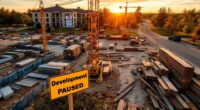As the senior living industry undergoes profound change due to demographic shifts, pandemic aftereffects, and evolving consumer preferences, skilled nursing facilities face unprecedented challenges in their operational models and service delivery systems. The post-pandemic landscape has catalyzed a significant paradigm shift, with approximately 90% of seniors now expressing preference for aging in place rather than moving to institutional care settings, necessitating a fundamental recalibration of traditional skilled nursing offerings to maintain market relevance.
This evolution has prompted forward-thinking providers to integrate skilled nursing capabilities within extensive Life Plan Communities, effectively differentiating these environments from conventional nursing homes through enhanced medical complexity management, interdisciplinary staffing configurations, and continuity of care protocols. Long-term care insurance typically provides substantial coverage for these integrated care environments.
The multifaceted teams deployed in these settings—comprising registered nurses, licensed practical nurses, certified nursing assistants, therapists, and social workers—facilitate the implementation of specialized care modalities including rehabilitation services, wound management, and intravenous therapies that address complex medical conditions while maintaining personalized treatment approaches.
You’ll find that successful skilled nursing integration within senior living ecosystems increasingly emphasizes qualitative experiential factors alongside clinical competencies. The establishment of trust relationships between care recipients and providers, cultivation of community engagement opportunities, and maintenance of dignity through person-centered care methodologies collectively contribute to improved resident outcomes and enhanced competitive positioning. Research consistently demonstrates that residents who receive care that honors their dignity and respect experience significantly better physical and psychological outcomes.
These dimensions, coupled with cultural sensitivity and family communication protocols, constitute critical differentiators in contemporary skilled nursing delivery models. The typical 28-day stay in Life Plan Communities allows for focused rehabilitation that helps seniors regain independence more effectively than traditional nursing homes.
Cultural competence and effective family engagement emerge as essential components differentiating today’s progressive skilled nursing paradigms.
The economic viability of skilled nursing within senior living portfolios demands strategic adaptation through business model innovation, referral network cultivation, and performance metric optimization. Providers must demonstrate quantifiable value propositions to healthcare partners while implementing customizable service structures that accommodate varying care requirements, including specialized arrangements for couples with dissimilar needs.
The incorporation of waiting list management systems further enables providers to optimize occupancy metrics while facilitating proactive consumer planning for eventual care changes within Continuing Care Retirement Communities that offer extensive service continuums.









